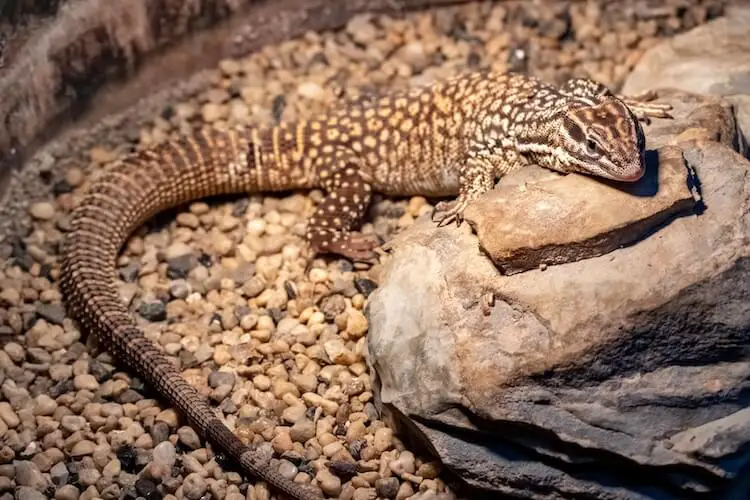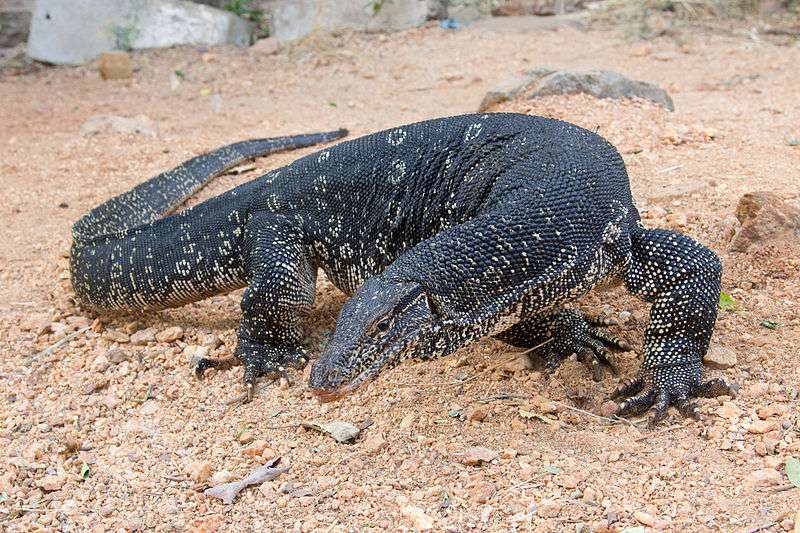
Description:
Scientific name: Varanus melinus
Life span: 20 years
The quince monitor’s head, legs, back, and tail are all a rich yellow color. On its lower neck, it possesses a black reticulation. The tail contains stripes of black and yellow that alternate, becoming paler in the last third. Little diversity exists in the color of its bright pink tongue. The overall length of this species ranges from 80 to 120 cm. The Mangrove Monitor and this species have extremely similar morphologies. Baby quince monitors are deeper in color and progressively become more vibrant as they age.
Native Region/Habitat
It is believed that the quince monitor is native to the Sula Islands in Indonesia, while it is also possible that it exists in Banggai. Initially, it was said to have come from the Obi Islands, although this was really an intermediary station for the trafficking in animals. Loss of habitat and wildlife trade collection pose threats to it.

Behavior:
Quince monitor is regarded as a peaceful species. When you get your monitor, the first thing you must do is securely cage it and keep it for a few weeks with no human involvement. Due to their intense territorial nature, monitors require some time to adjust to and feel secure in their new surroundings. The most important things are patience and solid observational abilities. This daily contact monitor may be expanded to ever-larger areas each month. At first, it would be flighty and shy in a strange place, but would quickly adjust and begin exploring until all of your living spaces were his.
Care As a pet/In captivity:
These would benefit from a big pool. It’s also crucial to have a deep, roomy region that is packed with a substrate for borrowing. Because they frequently utilize the water as a means of escape, place plenty of sturdy branches above the water area. Climbable walls are also ideal for making use of the entire enclosure. It seems to work well to have a broad, high-up basking area so that they may wander away from the hottest part while remaining near the lightbulb. Normally, they like to conceal themselves in the substrate or the water, but occasionally they use cork tubes. Keep in mind that great all-around monitors can be a little reserved.
Table





